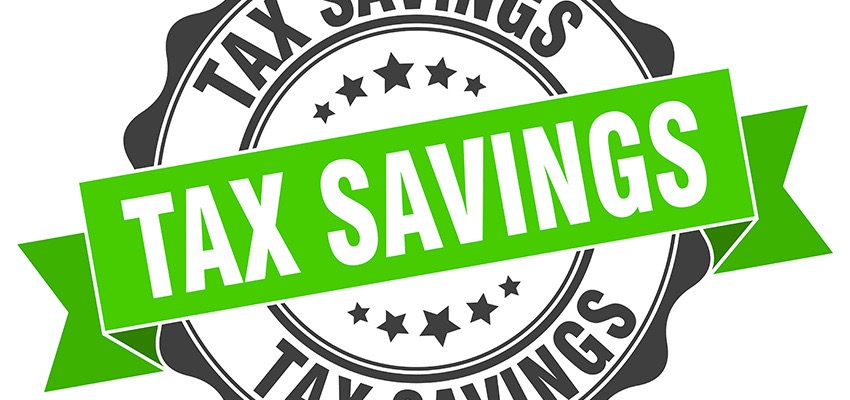Individuals with an annual income exceeding ₹20 lakhs fall within the higher income tax* bracket. In such cases, structured tax planning becomes important for reducing liability. Understanding available deductions and exemptions alongside choosing the right tax regime helps optimise taxation. Careful assessment of investment and expenditure options can further improve tax efficiency. This article explains how to save tax on salary income of 20 lakhs.
Key takeaways
- The new regime offers lower tax rates, ₹4 lakh exemption, and ₹75,000 standard deduction* but excludes HRA, LTA, and 80C.
- The old regime is useful if deductions like 80C, 80D, HRA, or home loan together cross ₹2.5–3 lakh.
- On a ₹20 lakh salary, taxable income becomes ₹19.5 lakh after standard deduction*; the new regime usually reduces tax slightly.
- Major savings include 80C investments, NPS extra ₹50,000, health insurance under 80D, and home loan interest under Section 24.
Income tax slab rates for new tax regime applicable for FY 2025-2026
The new tax regime for FY 2025–26 aims to simplify income taxation by offering lower tax rates and providing a few exemptions and deductions compared with the old regime. Here are the new income tax rates applicable for FY 2025-2026.
Revised income tax slabs (FY 2025–26)
Annual Income |
Tax Rate |
Up to ₹4,00,000 |
0% |
₹4,00,001 - ₹8,00,000 |
5% |
₹8,00,001 - ₹12,00,000 |
10% |
₹12,00,001 - ₹16,00,000 |
15% |
₹16,00,001 - ₹20,00,000 |
20% |
₹20,00,001 - ₹24,00,000 |
25% |
Above ₹24,00,000 |
30% |
The update introduces an increased basic exemption limit of ₹4 lakh and a higher rebate of ₹60,000 under Section 87A. Under this regime, individuals with income up to ₹12 lakh will have no tax liability. Additionally, salaried taxpayers are entitled to a standard deduction* of ₹75,000, effectively making income up to ₹12.75 lakh fully exempt from tax.
How to choose between new and old tax regime?
With the updated income tax slabs for FY 2025–26, selecting an appropriate tax regime is important. The choice depends on your income, tax-saving investments, and the salary breakdown, including basic pay, allowances, and other benefits.
A. When to consider the new tax regime
- Income up to ₹12 lakh: Individuals earning up to ₹12 lakh may benefit from a full tax rebate under Section 87A, resulting in zero tax liability.
- Limited deductions: If your salary does not include significant exemptions such as house rent allowance (HRA), home loan interest, or investments under Section 80C, the new regime’s lower tax rates can apply effectively.
- Simplified compliance: The new regime eliminates the need to track multiple exemptions and deductions, simplifying the tax filing process.
The new regime may be suitable for individuals who prefer a straightforward approach without managing multiple deductions and exemptions.
B. When to stick with the old tax regime
- Substantial deductions: If you claim deductions like 80C, 80D, HRA, home loan interest, etc., and the total amounts to ₹5 lakh or more, the old regime may offer lower tax liability.
- Customised salary structures: Individuals with salary components like house rent allowance (HRA), leave travel allowance (LTA), and other allowances that are tax-exempt under the old regime may find it suitable.
What is the Income Tax Calculation for 20 Lakhs Per Annum?
Calculating income tax for a 20-lakh salary involves the following steps:
Step-1: Determine Taxable Income
The first step is to calculate your taxable income. To do this, subtract all the rebates, deductions and exemptions from your gross income.
Step-2: Apply Income Tax Slab
The next step is to apply a tax slab according to the new or old tax regime, depending on your deductions and financial situation. As mentioned in the table, the old tax regime has higher tax rates than the new one.
However, the new regime does not allow significant deductions, making it suitable for individuals with fewer deductions. So, if you have multiple deductions, then the old tax regime will be a better option; else you can go with the new regime. Note that if you earn more than ₹15 lakhs per year, then you fall in the 30% tax bracket.
Step-3: Determine Tax Liability
Calculate your tax liability by applying the given tax rate. For individuals earning ₹20 lakhs per year, the tax on 20 lakhs of income will be 30% of their taxable income.
Here is the simple formula for income tax calculation for 20 lakhs per annum:
Gross Salary - Exemptions = Taxable Income
Taxable Income - Deductions = Net Taxable Income
Annual Income |
New Tax Regime (FY 2023-24) |
Old Tax Regime (FY 2022-23) |
Up to ₹2.5 lakhs |
No Tax |
No Tax |
> ₹2.5 lakhs – ₹5 lakhs |
5% |
5% (Rebate) |
> ₹5 lakhs – ₹7.5 lakhs |
10% + ₹12,500 |
20% + ₹12,500 |
> ₹7.5 lakhs – ₹10 lakhs |
15% + ₹37,500 |
20% + ₹12,500 |
> ₹10 lakhs – ₹12.5 lakhs |
20% + ₹75,000 |
30% + ₹1,12,500 |
> ₹12.5 lakhs – ₹15 lakhs |
25% + ₹1,25,000 |
30% + ₹1,12,500 |
> ₹15 lakhs and above |
30% + ₹1,87,500 |
30% + ₹1,12,500 |
Tax saving options above Rs. 20 lakhs salary - New tax regime
The new tax regime is designed for taxpayers who prefer to avoid several deductions and exemptions available under the old tax regime. As a result, individuals with salaries exceeding Rs. 20 lakhs have limited tax-saving opportunities under this regime. The following table highlights tax-saving options above Rs 20 lakh salary under the new tax regime.
Option |
Section/Type |
Standard deduction* |
General provision |
NPS employer contribution |
Section 80CCD(2) |
Agniveer corpus investment |
Section 80CCH |
Family pension |
Section 57(iia) |
Voluntary retirement benefit |
Section 10(10C) |
Gratuity payment |
Section 10(10) |
Leave encashment benefit |
Section 10(10AA) |
Other available deductions
The new regime also provides the following additional deductions:
- Transport allowance: Available for specially abled individuals
- Conveyance allowance: Covers travel expenses related to employment duties
- Home loan interest: Deductions available under Section 24 on home loan interest (only on let-out property)
Tax saving options above ₹20 lakh salary old tax regime
The old tax regime allows taxpayers to reduce their tax liability using various deductions and exemptions. For a salary above ₹20 lakh, the following options are available:
Tax Saving Option |
Section |
Maximum Limit |
Benefits |
Section 80C investing in tax saving instruments |
80C |
₹1.5 lakh |
PPF, EPF, ELSS, Home loan repayment, SSY, NSC, 5-year FD |
Section 80D - health insurance premium |
80D |
₹25,000 (₹50,000 if above 60 years) |
Medical coverage + tax benefit |
Home loan payments |
80C & 24(b) |
Principal: ₹1.5 lakh, Interest: ₹2 lakh |
Property ownership + tax saving |
Section 80 E-education loan |
80E |
Deduction* for 8 years from the year of repayment |
Full interest deduction* |
Section 80G - donating to charity |
80G |
50% of 100% of the donated amount for notified institutions |
Social responsibility + tax benefit |
Section 80DD- costs to treat disabled dependents |
80DD |
40% disability: ₹75,000, 80% disability: ₹1.25 lakh |
Medical support for dependents |
How to save income tax on 20 lakhs salary?

With proper tax planning for a 20 lakh salary, you can increase your tax savings and optimise your income. The following are some ways you can do so:
Invest in tax saving instruments (Section 80C)
Section 80C is one of the common ways to save tax and obtain potential returns on your investments. You can avail tax benefits of up to ₹1,50,000 per year by investing in the following options:
Life Insurance Policies
Public Provident Fund (PPF)
Employee Provident Fund (EPF)
Home Loan Repayment and Stamp Duty
Equity Linked Saving Scheme Funds (ELSS)
National Savings Certificate (NSC)
Sukanya Samriddhi Yojana (SSY)
5 years Fixed Deposit
Purchase health insurance policy
Health insurance offers financial safety against unforeseen events. Besides this safety net, a health insurance policy can also help you get great tax deductions as well. As per Section 80D, you can claim up to ₹25,000 on health insurance premiums in the name of yourself, your spouse, and your children.
For an insured aged above 60, you can claim up to ₹50,000.
Further, if you have health insurance plans for your parents or dependent senior citizens, you can additionally claim up to ₹25,000 (₹50,000 for those above age 60).
Opt for education loans
Getting an education loan may be a reasonable way to save income tax on a 20 lakh salary. Under Section 80E of the Income Tax Act, you can claim an interest deduction of up to 8 years from the repayment date of the loan taken for yourself, your children, your spouse, or any dependant of whom you are the legal guardian.
Claim deductions on home loan
Under Section 80C, you may claim up to ₹1,50,000 on the principal amount of your home loan. Further, you may claim up to ₹2,00,000 on interest under Section 24b. It can be a substantial tax-saving option for high-salaried individuals.
Medical expenses to treat disabled
If you are bearing the medical expenses of your legal dependant who is disabled, then you may get the following deductions under Section 80DD:
Up to ₹75,000 for 40% disability
Up to ₹1,25,000 for 80% disability
Donate to charity
Section 80G allows 50% to 100% tax deductions for charity donations. It means that you can save nearly the full tax amount by making eligible donations to charitable trusts and organisations.
House rent allowance (HRA) exemption
Salaried employees living in a rented house can reduce their tax liability by claiming HRA. The lowest among the following three is considered for exemption:
- Actual house rent allowance (HRA) received.
- 50% of salary (basic plus DA) for metro cities, or 40% for non-metro cities.
- Actual rent paid minus 10% of salary (basic plus DA)
This calculation allows employees to claim tax relief on a portion of their rent expenses.
Leave travel allowance (LTA) exemption
You can lower your tax liability by claiming Leave Travel Allowance (LTA) under Section 10(5) for travel expenses within India. The exemption* is available in a block of four years, with the current block running from 2022 to 2025. The LTA exemption covers travel costs for the employee and their family but does not include food, accommodation, or other expenses.
National pension scheme (NPS) investment
NPS contributions and interest earned are eligible for deductions under section 80C deductions, where you can avail exemption for up to Rs. 1.5 lakh. However, you can contribute to NPS to qualify for a deduction* of up to Rs. 50,000 under section 80CCD(1B), over and above the Rs. 1.5 lakh limit under section 80C. This means you can effectively reduce your taxable income by an additional Rs. 50,000.
Professional development expenses
Under Section 80E, you can claim deductions for expenses related to professional development. This includes interest on loans taken for higher education or courses that enhance professional skills. There is no upper limit on the amount you can claim under Section 80E, which allows taxpayers to claim the entire interest paid on such loans.
Exemptions on rent from house property
If you own a property, renting it out provides certain tax benefits*. While rental income is taxable as per your income slab, you can claim the full interest paid on the home loan as a deduction* under Section 24. Additionally, a standard deduction* of 30% under Section 24(a) can be claimed on the net annual rental value for maintenance costs, even if your actual expenses are lower. This helps reduce taxable income while managing rental property.
Which regime is better for 20 lakh LPA to save tax?
Here is a side-by-side comparison of the old and new tax regimes to understand which regime may be suitable for Rs. 20 lakh LPA to save tax:
Step 1: Compare taxable income after deductions
Particulars |
Old Tax Regime (₹) |
New Tax Regime (₹) |
Gross Salary |
20,00,000 |
20,00,000 |
Less: Standard Deduction* |
50,000 |
50,000 |
Net Salary After Standard Deduction* |
19,50,000 |
19,50,000 |
Section 80C |
1,50,000 |
Not applicable |
Section 80D |
50,000 |
Not applicable |
Section 24(b) |
2,00,000 |
Not applicable |
Section 80CCD(1B) |
50,000 |
Not applicable |
Total Deductions |
5,00,000 |
50,000 |
Net Taxable Income |
15,00,000 |
19,50,000 |
Step 2: Compare tax payable
Tax Calculation |
Old Tax Regime (₹) |
New Tax Regime (₹) |
Income up to Rs. 2.5 lakh |
NIL |
NIL |
Income from Rs. 2.5 lakh - Rs. 5 lakh |
12,500 |
12,500 |
Income from Rs. 5 lakh - Rs. 7.5 lakh |
50,000 |
25,000 |
Income from Rs. 7.5 lakh - Rs. 10 lakh |
50,000 |
37,500 |
Income from Rs. 10 lakh - Rs. 12.5 lakh |
75,000 |
50,000 |
Income from Rs. 12.5 lakh - Rs. 15 lakh |
75,000 |
62,500 |
Income from Rs. 15 lakh - Rs. 19.5 lakh |
1,35,000 |
1,35,000 |
Total Tax Payable |
3,97,500 |
3,72,500 |
Add: 4% Cess |
15,900 |
14,900 |
Total Tax Liability |
4,13,400 |
3,87,400 |
Despite having various deductions available under the old tax regime, the new regime's lower tax slabs result in reduced tax liability. For a Rs. 20 lakh salary, the new regime saves approximately Rs. 26,000 annually compared to the old regime.
How to reduce your taxable income legally?
The following are some ways to reduce your taxable income legally:
- Avail section 80C benefits: Invest in options like public provident fund (PPF), employee provident fund (EPF), equity-linked savings scheme (ELSS), tax-saving fixed deposits, and health insurance premiums up to a total of Rs. 1.5 lakh.
- Claim HRA and Home Loan Deductions: If you're paying rent or servicing a home loan, claim exemptions under Section 10(13A) (HRA) and Section 24(b) (home loan interest).
- Contribute to NPS for Extra Savings: Claim an additional deduction* of Rs. 50,000 under Section 80CCD(1B) by investing in the national pension system.
- Deduct Health Insurance Premiums: Under Section 80D, claim up to Rs. 75,000 for premiums paid towards medical insurance for self, family, and parents.
- Leverage Education Loan & Charity Benefits: Claim deductions* on interest paid on education loans (Section 80E) and donations to eligible institutions (Section 80G).
- Choose the Right Tax Regime: Compare the old and new tax regimes to determine which offers more savings based on your income structure.
Conclusion
Choosing the right tax regime for a ₹20 lakh salary requires careful evaluation of your deductions, allowances, and investment plans. The new regime offers lower tax rates and a simple process, while the old regime supports those who want to claim higher deductions. Using available options like Section 80C investments, NPS, health insurance, home loan interest, and HRA can lower your taxable income. Compare both regimes closely, calculate your expected liability, and select the structure that aligns with your financial situation.







 FOR EXISTING POLICY
FOR EXISTING POLICY 
 FOR NEW POLICY
FOR NEW POLICY 




